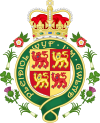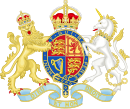1979 Welsh devolution referendum
| ||||||||||||||||||||||
Do you want the Provisions of the Wales Act 1978 to be put into effect? | ||||||||||||||||||||||
| Results | ||||||||||||||||||||||
|---|---|---|---|---|---|---|---|---|---|---|---|---|---|---|---|---|---|---|---|---|---|---|
| ||||||||||||||||||||||
 Results bycounty | ||||||||||||||||||||||
This articleneeds additional citations forverification.(December 2022) |
The1979 Welsh devolution referendumwas a post-legislativereferendumheld on 1 March 1979 (Saint David's Day) to decide whether there was sufficient support for a Welsh Assembly among the Welsh electorate. The referendum was held under the terms of theWales Act 1978drawn up to implement proposals made by theKilbrandon Reportpublished in 1973.
The plans were defeated by a majority of 4:1 (20.3% for and 79.7% against) with only 12% of the Welsh electorate voting in favour of establishing an assembly. Asecond referendumto create a devolved assembly for Wales was held in 1997, which led to the enactment of theGovernment of Wales Act 1998and the creation of theNational Assembly for Walesin 1999.
Background[edit]
Both theScotland Actand theWales Actcontained a requirement that at least 40% of all voters back the plan. It had been passed as an amendment byIslington SouthMPGeorge Cunninghamwith the backing ofBedwelltyMPNeil Kinnock.
Kinnock, the future leader of the Labour Party, called himself a "unionist". His stated view was that "between the mid-sixteenth century and the mid-eighteenth century Wales had practically no history at all, and even before that it was the history of rural brigands who have been ennobled by being called princes".[1][2]He was one of six south Wales Labour MPs who opposed their own Government's plans, along withLeo Abse(Pontypool),Donald Anderson(Swansea East),Ioan Evans(Aberdare),Fred Evans(Caerphilly), andIfor Davies(Gower).
The government ofJim Callaghandid not have an overall majority in theHouse of Commons,and was therefore vulnerable to opposition from within its own ranks. The Labour party was split onhome rulefor Wales with a vocal minority opposed. They considered devolution as a danger to the unity of the UK and a concession toWelsh nationalismin the wake ofby-electionvictories byPlaid Cymru.
The Labour Party committed itself to devolution after coming to power in theFebruary 1974 General Election.It followed the findings of aRoyal Commission on the ConstitutionunderLord Kilbrandon.Set up in 1969 in the wake of pressure to address growing support forindependenceinScotlandandWalesit delivered a split report in 1973. TheRoyal Commissionrecommended legislative and executivedevolutionto Scotland and Wales, with a minority supporting advisoryRegional CouncilsforEngland.This plan was rejected as too bureaucratic and ill-advised in economic terms. New plans were brought forward byHarold Wilson's government in 1975 and 1976 which confined devolution to Scotland and Wales.
TheScotland and Wales Billhad a difficult passage throughParliamentand the government, lacking a majority to pass the plan, withdrew the legislation and introduced separate Bills forScotlandandWales.Hostile Labour MPs from thenorth of England,Wales and Scotland combined to insist that Assemblies could only be passed if directly endorsed by voters in a post-legislative referendum.
In 1978,John Morris, Baron Morris of Aberavonwas under the impression that James Callaghan would call a general election in the autumn, but called it off. On 1 March,Saint David's Day,the devolution referendum was held but came at the end of theWinter of Discontent.Factors such as "tribalism" divisions within Wales and impressions that a Welsh Assembly would be dominated by people of one particular region could have potentially caused the proposal to be rejected. According to John Morris, people in southern Wales were persuaded by the No campaign that the Assembly would be dominated by "bigoted Welsh-speakers from the north and the west" whilst in the northern Wales, people had been convinced the Assembly would be dominated by the Glamorgan County Council "Taffia".[3]
The Welsh Assembly proposed in the Wales Act 1978[edit]
| This article is part ofa serieswithin the Politics of the United Kingdomon the |
| Politics of Wales |
|---|
 |
Structure[edit]
Had the Wales Act 1978 entered force, it would have created aWelsh Assemblywithout primary legislative or tax raising powers. The proposed assembly would have had 72 members elected by thefirst past the postsystem with each Westminster constituency returning either two or three assembly members. It would have met at theCoal ExchangeinCardiff.
It was planned that assembly would have operated under the committee system where subject committees would be formed with representation of all groups in the assembly.[4]An Executive Committee would have been formed composed of the chairs of the various subject committees and other members selected by the assembly. A Chairman of the Executive Committee would have been selected who would also serve as Leader of the Assembly.
Powers[edit]
The assembly would have had the ability to pass secondary legislation with responsibility for primary legislation remaining with theUK Parliamentat Westminster. It would have taken over the powers and functions of theSecretary of State for Wales.
The proposed assembly would have had responsibility for:
- housing
- health
- education
- planning
- management of theWelsh Development Agency
- appointments to Welshquangos.
- It would be able to aid the development of:
- Welsh language
- museums and galleries
- libraries
- arts and crafts
- sport
- culture
- recreation.[4]
Result[edit]
| Choice | Votes | % |
|---|---|---|
| 956,330 | 79.74 | |
| Yes / Ydw | 243,048 | 20.26 |
| Valid votes | 1,199,378 | 99.72 |
| Invalid or blank votes | 3,309 | 0.28 |
| Total votes | 1,202,687 | 100.00 |
| Registered voters/turnout | 2,038,048 | 58.8 |
| Source:BBC | ||
| National referendum results (excluding invalid votes) | |
|---|---|
| Yes/Ydw 243,048 (20.3%) |
No/Nac Ydw 956,330 (79.7%) |
| ▲ 50% | |
By Counting area[edit]
| Council Area | Turnout | Votes | Proportion of votes | ||
|---|---|---|---|---|---|
| Yes | No | Yes | No | ||
| Clwyd | 51.1% | 31,384 | 114,119 | 21.6% | 78.4% |
| Dyfed | 64.6% | 44,849 | 114,947 | 28.1% | 71.9% |
| Gwent | 55.3% | 21,369 | 155,389 | 12.1% | 87.9% |
| Gwynedd | 63.4% | 37,363 | 71,157 | 34.4% | 65.6% |
| Glamorgan (Mid) | 58.6% | 46,747 | 184,196 | 20.2% | 79.8% |
| Glamorgan (South) | 58.1% | 21,830 | 144,186 | 13.1% | 86.9% |
| Glamorgan (West) | 57.5% | 29,663 | 128,834 | 18.5% | 81.5% |
| Powys | 66.0% | 9,843 | 43,502 | 18.7% | 81.3% |
Aftermath[edit]
The referendums in Scotland and Wales coincided with a period of unpopularity for the Government during the period known as thewinter of discontentin addition to "tribalism" divisions within Wales and impressions that the National Assembly for Wales would be dominated by people of one particular region. According to John Morris, people in southern Wales were persuaded by the No campaign that the Assembly would be dominated by "bigoted Welsh-speakers from the north and the west" whilst in the northern Wales, people had been convinced the Assembly would be dominated Glamorgan County Council “Taffia”. These factors led to a failed devolution referendum.[3]
Proposals for a more powerfulAssemblyinScotlandattracted the support of a majority of those who voted (1,230,937 for, 1,153,502 against) (see1979 Scottish devolution referendum), but it amounted to just 32.5% of the total electorate, lower than the 40% threshold required.
The results sealed the fate of theminorityLabour government, and as a direct result of the defeat of the referendums in Wales and Scotland theScottish National Party(SNP) withdrew its support for the government, though Plaid Cymru supported the government in exchange for political concessions.
In the House of Commons on 28 March 1979, the Labour government was defeated on amotion of no confidenceby one vote, only the second time in the 20th century that a government was brought down in this way. Labour's defeat in the1979 General ElectiontoMargaret Thatcher'sConservative Partyprecipitated a civil war within its own ranks, and the party was to be out of office for eighteen years.
See also[edit]
Further reading[edit]
- Wales for the Assembly Campaign (1979) Papersat the National Library of Wales
- "No Assembly" Campaign Papersat the National Library of Wales
- Aberystwyth 'No Assembly' Campaign (1979) Archiveat the National Library of Wales
References[edit]
- ^"Neil Kinnock".PolicyMogul.Retrieved20 December2022.
- ^Stead, Marcus (15 September 2020)."Wales – A Country Divided Part I".Country Squire.Retrieved20 December2022.
- ^abWalesOnline (2 October 2011)."Lord Morris of Aberavon lifts the lid on the disastrous 1979 devolution referendum".WalesOnline.Retrieved9 December2022.
- ^ab"Welsh Referendum".BBC News.Retrieved7 October2014.


